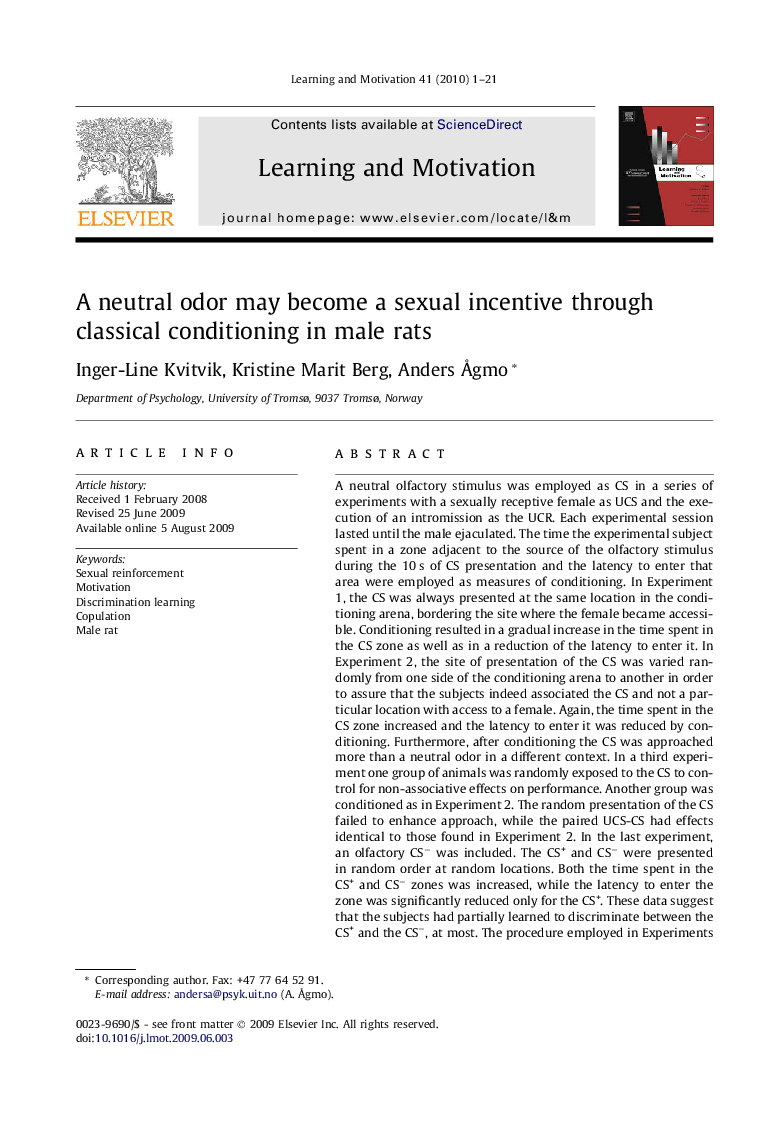| کد مقاله | کد نشریه | سال انتشار | مقاله انگلیسی | نسخه تمام متن |
|---|---|---|---|---|
| 919033 | 919874 | 2010 | 21 صفحه PDF | دانلود رایگان |

A neutral olfactory stimulus was employed as CS in a series of experiments with a sexually receptive female as UCS and the execution of an intromission as the UCR. Each experimental session lasted until the male ejaculated. The time the experimental subject spent in a zone adjacent to the source of the olfactory stimulus during the 10 s of CS presentation and the latency to enter that area were employed as measures of conditioning. In Experiment 1, the CS was always presented at the same location in the conditioning arena, bordering the site where the female became accessible. Conditioning resulted in a gradual increase in the time spent in the CS zone as well as in a reduction of the latency to enter it. In Experiment 2, the site of presentation of the CS was varied randomly from one side of the conditioning arena to another in order to assure that the subjects indeed associated the CS and not a particular location with access to a female. Again, the time spent in the CS zone increased and the latency to enter it was reduced by conditioning. Furthermore, after conditioning the CS was approached more than a neutral odor in a different context. In a third experiment one group of animals was randomly exposed to the CS to control for non-associative effects on performance. Another group was conditioned as in Experiment 2. The random presentation of the CS failed to enhance approach, while the paired UCS-CS had effects identical to those found in Experiment 2. In the last experiment, an olfactory CS− was included. The CS+ and CS− were presented in random order at random locations. Both the time spent in the CS+ and CS− zones was increased, while the latency to enter the zone was significantly reduced only for the CS+. These data suggest that the subjects had partially learned to discriminate between the CS+ and the CS−, at most. The procedure employed in Experiments 2 and 3 seems to be the most promising for studies of sexual conditioning in male rats.
Journal: Learning and Motivation - Volume 41, Issue 1, February 2010, Pages 1–21